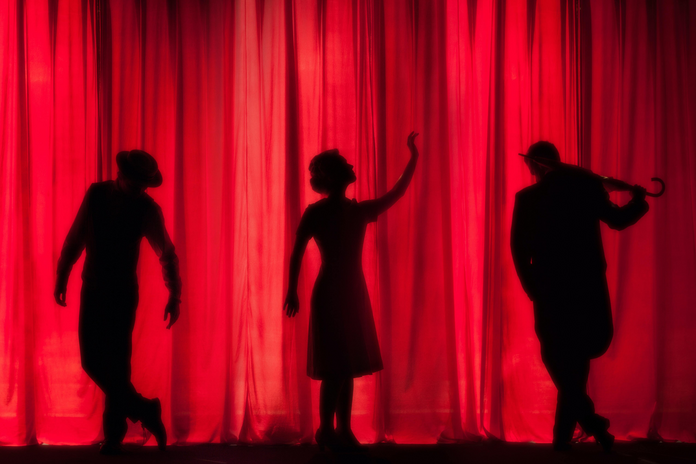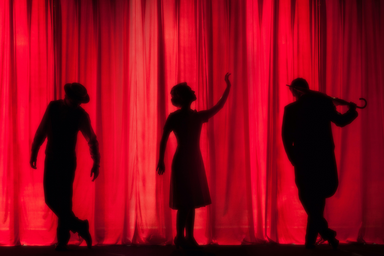The universe of ballet is full of magic and fantastic stories, which is what makes it so beautiful. However, it can also make the plot line a bit strange and complicated to understand. Spirits, personification and unusual dreams are very common in the tales. If you don’t know the story beforehand, it can be hard to figure out what is going on in the story. To help you understand the plot line ー and have a little fun with the strange narratives ー we’ve selected 5 ballets and explained what they’re all about. Check it out!
- La bayadère
-
Written by Marius Petipa and Sergei Khudenov, the story of La Bayadère is about Nikiya, a temple dancer who falls in love with Solor, a young warrior. The couple plans to run away together and decides to swear their loyalty to each other before the sacred fire. However, Solor ends up forgetting all about his oath when Rajá, a powerful and rich man, offers his daughter’s hand in marriage, who is called Gamzatti. When Nikiya finds out about the new arrangement, she runs to Gamzatti and begs her not to marry Solor. Out of despair, she tries to stab her with a dagger, but can’t go through with it, which only makes Gamzatti want to kill her.
During the celebration of Solor and Gamzatti’s wedding, Rajá demands that Nikiya presents a dance and, after, she is gifted with a beautiful basket of flowers. But what she didn’t know is that Gamzatti hid a poisonous snake in it and, in the middle of her dance, she gets bitten in the eye. A priest, who was a friend of hers, finds an antidote and gives it to Nikyia, however, after realizing that Solor actually wants to marry Gamzatti, she decides not to take the cure and dies.
So far, the story was about a love triangle which had a lot of drama and a tragic ending and that’s not an uncommon plot line. But this is when the story becomes way more strange. Devastated about Nikiya’s death, Solor smokes opium to distract himself and starts hallucinating. He is transported to the Kingdom of the Shades, where he sees Nikiya again and reconciles with her. This scene is often pointed out as one of the first forms of Abstract Ballet. In it, the dance is more relevant than the story to be told. No wonder the plot is so unusual.
When he wakes up, his wedding is ready. The moment Solor and Gamzatti get married, he breaks the oath taken before the sacred fire, which enrages the gods and causes a storm that destroys the temple and everyone in it. In the end, Nikiya and Solor’s shadows are reunited in spirit.
Music: Ludwig Minkus
Choreography: Marius Petipa
Debut: 1877
- The Nutcracker
-
The Nutcracker is one of the most famous ballets ever, but, let’s face it, it is a bit overestimated. Even though the choreography and the music are beautiful, the plot line is very weird. Inspired by E.T.A. Hoffman’s children’s book, The Nutcracker and the Mouse King, the ballet tells the magic and romantic story of Clara and her Nutcracker, a doll which was a gift from her uncle, the wizard Drosselmeyer. During the family Christmas party, the uncle gives out a lot of magical presents to the kids, including harlequin dolls that come to life.
After everyone had already left the party, Clara falls asleep and her uncle appears again to cast a spell under the Nutcracker and his niece, which leads to an enchanting (and odd) adventure. Suddenly, Clara is awakened by an invasion of enormous rats, and realizes she has actually decreased in size. Then, the Nutcracker, who turned into a real person, appears with an army to defeat the Mouse King, by throwing enormous shoes at their enemy. After the battle, Clara and the Nutcracker escape by the mouses’ hole, which leads to a winter forest and he turns into a handsome prince. The couple watch the Waltz of the Snowflakes, a very famous dance and make their way to the Land of Sweets, ruled by the Sugar Plum Fairy.
Clara and the Nutcracker arrive in Confiturembourg, the realm of sweets and confections. They are welcomed by the Sugar Plum Fairy, who organizes a show in their honor. The inhabitants of the land, originated from different countries, present to the visitors a variety of delicious foods: cocoa (Spanish dance), coffee (Arabic dance) and tea (Chinese dance). This part of the ballet can actually be quite diverse depending on the dance company, with adaptations of the “specialties” and choreographies. We also watch the Reed Flutes, the Waltz of the Flowers and the final pas de deux. After all the dances, Clara “wakes up” back in her house and everything goes back to normal. It’s, at the same time, a magical, strange and wonderful adventure.
Music: Pyotr Ilyich Tchaikovsky
Choreography: Marius Petipa and Lev Ivanov
Debut: 1892
- Le Corsaire
-
Based on a poem by the renowned Lord Byron, Le Corsaire is a very dramatic and complicated story full of plot twists that takes place in the Middle East. In the story, Conrad, the leader of the pirates, and his men arrive in Lankendem’s bazaar, where slave girls are being traded. When Medora, one of the slaves, is presented, Conrad falls in love with her. But he is not the only one amazed by her beauty, the pasha is also entranced by the girl and decides to buy Medora as well as her loyal friend, Gulnare. Heartbroken, Conrad instructs his men to steal Medora back and kidnap Lankendem.
Conrad shows Medora and the pirates to his hideout, where they all dance. The girl, in the name of their love, asks Conrad to free the other slaves from the pasha. He agrees, however, that does not make his lieutenant, Birbanto, happy. He rebels against the idea and persuades the pirates to riot against Conrad. But the leader’s commanding personality instills terror into the hearts of the pirates and they abandon the plan. Not to be thwarted, Birbanto comes up with a new idea: he sprays a rose with a sleeping potion and gives it to Medora, who ends up giving the flower to her loved one.
While Conrad falls into a drugged sleep, the pirates try to take Medora. Out of desperation, she grabs a dagger and cuts Birbanto’s arm, who becomes outraged and tries to kill Conrad, but is stopped by one of the slaves. In the middle of the confusion, Lankendem steals Medora back and escapes. When Conrad wakes up, Birbanto pretends he doesn’t know what happened and swears his loyalty to him. Desolated, Conrad goes to rescue Medora, who is taken to the pasha’s palace. The pasha is delighted by Medora’s return and declares that she will become his wife.
Then, he falls asleep and dreams of his women in a beautiful garden in a very famous scene in ballet, called Jardin Animé. He is suddenly awakened by the arrival of Conrad, Birbanto and the pirates, disguised as pilgrims. They are invited in and reveal themselves as pirates, erupting chaos within the palace. Conrad and his men chase away the pasha, his guard and wives. After they are together again, Medora exposes Birbanto as a traitor by showing the cut in his arm and Conrad shoots him. Along with Gulnare, the couple escape the palace and flee to the ship. There’s just one more plot twist to end the story: a storm enrages the sea and sinks the ship. But there’s a happy ending: Conrad and Medora manage to cling into a rock and save their lives.
Music: Adolphe Adam
Choreography: Marius Petipa
Debut: 1858
- Coppelia
-
This is another ballet inspired by E.T.A. Hoffman’s work in this list. Coppelia is based on the writer’s tale “Der Sandmann” (“The Sandman”), published in 1815. The story takes place in Poland and it’s the first ballet to include folk dances, such as czardas, mazurkas and polkas. The main character, Swanilda, is engaged to Franz, however, one day, he is charmed by a girl who reads every afternoon by the window of Doctor Coppelius’ house, who is a doll maker. Franz tries everything to get her attention, but never gets a reaction, until suddenly she gets up and sends him kisses. Swanilda catches them in the act and gets mad at Franz. To try and make up, he picks up a piece of wheat and says he hears a noise, which means he loves her, but she doesn’t hear anything. However, eventually they do reconcile.
At night, Franz and his friends pull a prank on Doctor Coppelius and his keys fall on the floor, which Swanilda and her friends find later on. They decide to go into the house to look around. A little while after they go in, Franz gets a ladder and climbs up the window to see the woman he was flirting with. Inside, the girls are afraid because teh house is full of people who don’t move. When they get closer, they find out that they are all dolls, including the woman who stays by the window, called Coppelia. Suddenly, Doctor Coppelius gets home and everybody runs out the door, except for Swanilda, who hides in the closet with Coppelia.
After everyone’s gone, Franz appears through the window and Doctor Coppelius decides to try a little experiment: he wants to bring Coppelia to life, but for it to work, he needs a human sacrifice. He gives Franz a drink that makes him fall asleep and he starts to prepare his magic. The doctor brings out Coppelia, however, what he didn’t notice was that Swanilda had changed clothes with the doll and was pretending to be her. To mess with Coppelius, she pretends the magic is working and she is coming to life.
She dances different choreographies until Franz wakes up and their friends come back to rescue them, activating all the dolls that start to dance. Coppelius gets angry and sad when he realizes he was tricked. After everything is settled, Swanilda and Franz get married. They give their shares of the wedding to Coppelius to fix the damages to his workshop. A tricky part of the final act of the ballet is that time, dawn and nightfall are personified and represented by dancers, which can make the story a bit hard to understand, but it’s quite beautiful.
Music: Léo Delibes
Choreography: Arthur Saint-Léon
Debut: 1870
- The Pharaoh’s Daughter
-
In the story of The Pharaoh’s Daughter, the young Englishman, Lord Wilson, is travelling in Egypt with his assistant, John Bull. While exploring the desert, a violent sandstorm suddenly brews and the men are forced to take shelter inside a pyramid. There, they discover the sarcophagus of Princess Aspicia, the beloved daughter of the Pharaoh. Wilson is offered opium to pass the time, which puts him into a deep sleep. During a hallucinating dream, Wilson goes back in time and becomes Ta-Hor, an Egyptian man who saves Aspicia from a lion. They fall in love, but the problem is that she is already betrothed to the Nubian King. They decide to run away to be together and the king chases them.
To escape, Aspicia hides in a fishermen’s inn, but she is found by the king, who forces her to marry him. Refusing to accept, she jumps into the Nile River. At the bottom of the river the Spirit of the Nile saves Aspicia and summons creatures to dance for her in the Underwater Kingdom. She asks for the Spirit to take her back to land and, out of mercy, he agrees. When she comes back, she discovers that Ta-Hor was also found and taken to the Pharaoh’s palace to be punished for “kidnapping” the princess. Ta-Hor is sentenced to death by a snake bite. Aspicia, however, saves her beloved when she threatens to allow the snake to bite her instead.
The Pharaoh pulls his daughter away from the snake and grants her permission to marry Ta-Hor, making the Nubian king leave in a fit of rage, swearing revenge. Everyone starts to celebrate, but as soon as the party reaches its peak, the opium fades out and Ta-Hor is transformed back into Wilson and he wakes up from his dream.
Music: Cesare Pugni
Choreography: Marius Petipa
Debut: 1862
Hope you enjoyed getting to know a bit of ballet trivia and that next time you watch these repertoires it will be easier to understand the story.


